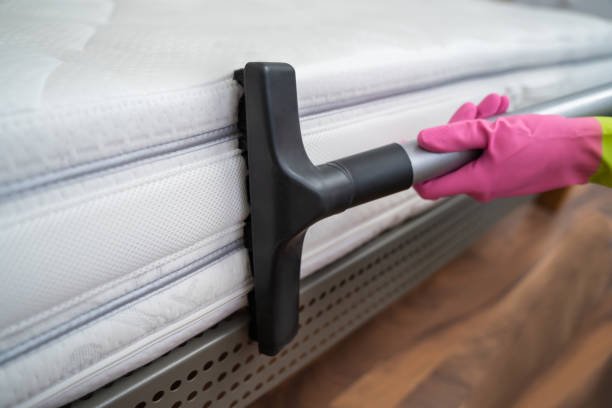
Mould is more than a dirty stain on your home—it’s a poisonous threat to your health and the structure of your home. Creeping across bathroom ceilings, dripping into kitchen cabinets, or lurking in damp basements, mould needs to be professionally and quickly removed.
Removing mould is not cleaning; it’s knowing why, preventing it from coming back, and living in a healthy home. What we are going to discuss in this article is everything that you would ever wish to know about mould removal, from knowing the signs to acquiring the best expert guidance.
What is Mould and Why is it a Problem?
Mould is a fungus that flourishes in moist, damp conditions. Mould grows by creating spores in the air that settle on wet surfaces. Established mould grows quite quickly.
Why mould is not good:
Safety risks: Mould causes allergy, asthma, and respiratory disease, particularly in vulnerable groups such as children or the elderly.
Structural decay: It may decay plaster, wood, drywall, and concrete over time.
Fixed odors: Mould odors make the room horrible and useless to use.
Loss of property value: Past history of mould or mould conditions may affect resale value of property.
Mould signs:
You can see the mould occasionally but never noticed for months. It saves time, money, and health hazards.
Warning signs
Black or green or white spots on walls, ceiling, or tiles
Peeling paint or buckling wallpaper
Mildew or musty odour, especially in poorly ventilated rooms
Unexplained window or cold wall condensation
Increased allergic reactions or breathing difficulties for occupants
Reasons for Mould Growth
The initial step when ready to eliminate mould properly is to address reasons for mould development.
A few of the most common reasons include:
Poor air circulation: Especially kitchens, bathrooms, and rooftops
Leaks: Foundations, pipes, or roof
Condensation: Where cold surfaces like windows and non-insulated walls meet wet warm air
Flooding or water damage: Even subtle hidden leaks
High humidity: Not uncommon in seashore environments and basements
Steps involved in Mould Removal
It’s not as simple as wiping it off. It’s a process done methodically and with safety in mind so that it won’t come back.
A typical mould removal process would go something like the following:
Inspection: Identifying the size and depth of the mould.
Moisture control: Procuring and sealing damp source or leak.
Containment: Isolation of infected space in order not to spread the spores.
Sterilization of air: HEPA filtration while remediating to sterilize air.
De-moulding: Removal by demolition or washing of mould infested material.
Sanitizing: Antifungal substances or biocides.
Restoration: Re-replacement of drywall, repaint, or repairing of infested space.
Remediating best by professional if heavily infested to undertake treatment and prevention thoroughly.
DIY or Professional Mould Removal
There are those seeking to know whether one can conduct DIY mould removal. It will be possible depending on how big and severe the problem is.
DIY mould removal is possible if:
- It is less than 1 square metre
- It is on a non-porous surface like glass or tiles
- You have adequate protective gear (gloves, goggles, mask)
- You can locate and repair the dampness source
- Professional mould removal needs to be done if
- It’s on a big surface or in numerous rooms
- It’s on its inside surfaces, ceiling, or air conditioner vents
- You have filthy symptoms in your residence
- You simply don’t know what kind of mould (some of which are toxic, i.e., black mould)
Experts utilise specialist equipment, protective equipment, and professional cleaning procedures to supply total and safe removal.
Preventing Mould from Re-Growth
Once the mould is gone, don’t let it return.
Regular household maintenance and continuous moisture checks must be carried out.
Preventive measures:
Vent more: Fit extractor fans in bathroom or kitchen areas.
Control humidity: Maintain indoor humidity at below 60%, ideally 30–50%.
Catch leaks in time:
Avoid having damp patches or dripping taps.
Use mould-resistant paint: Especially when painting bathroom and kitchen areas.
Dry clothes outside: Or a vented tumble drier to prevent indoor dampness buildup.
Checks attics and cellars: They are typical hothouses.
Health Hazards Due to Mould Risks
Although not all mould is toxic, exposure to large quantities over an extended period is harmful. The most typical health hazards are:
- Sneezing, coughing, and sinusitis
- Asthma attack and wheezing
- Skin allergy or burning of eyes
- Dullness or headache in rooms infested
- In the worst scenario, mycotoxin (toxic mould) exposure causes neurological disease
If your family member or the person is experiencing unforeseen health issues, the solution will be a mould test.
How to Choose the Best Mould Cleanup Service
When you plan to hire a professional mould cleanup service provider, do some research to get an outstanding, professional service.
Do not forget to verify the following:
Experience and certification in mould remediation
Good customer feedback and referrals
Use of safety and environmentally friendly cleaning chemicals
Thorough inspection report and follow-up inspection report
Transparency of service and cost commitment
Final Words
Mould is a subtle unwelcome guest who can be powerful enough to bring your house building structure tumbling down and even the inhabitants inside. Whilst in the beginning it’s a tiny dot on the corner, if left on its own, mould can become an absurd stinking whole pack overnight.
By moving promptly, with causes at hand, and selecting professional aid when the time comes, you can repossess your house and protect your well-being. With limited infestation or significant mould growth, successful mould elimination is the key to a cleaner, healthier environment. Contact us for more information on Mould Removal Birmingham.